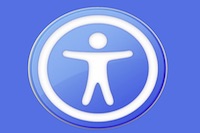Developing Guidelines for Evaluating the Adaptation of Accessible Web-Based Learning Materials
 E-learning is a rapidly developing form of education. One of the key characteristics of e-learning is flexibility, which enables easier access to knowledge for everyone. Information and communications technology (ICT), which is e-learning’s main component, enables alternative means of accessing the web-based learning materials that comprise the content of e-learning. However, these materials can help provide a good educational experience only if they are designed carefully, which is especially true for people that have difficulties with learning from text or those with other learning disabilities (e.g., dyslexia). The main obstacle to learning for such people is usually posed by the form in which web-based learning materials are provided. Using guidelines from relevant literature, this article provides a checklist that assesses the degree to which web-based learning materials take account of the needs of people with disabilities, especially those with dyslexia. The article focuses more on the technical aspects of web-based learning materials, as they are a crucial factor that can influence the accessibility of web-based learning materials.
E-learning is a rapidly developing form of education. One of the key characteristics of e-learning is flexibility, which enables easier access to knowledge for everyone. Information and communications technology (ICT), which is e-learning’s main component, enables alternative means of accessing the web-based learning materials that comprise the content of e-learning. However, these materials can help provide a good educational experience only if they are designed carefully, which is especially true for people that have difficulties with learning from text or those with other learning disabilities (e.g., dyslexia). The main obstacle to learning for such people is usually posed by the form in which web-based learning materials are provided. Using guidelines from relevant literature, this article provides a checklist that assesses the degree to which web-based learning materials take account of the needs of people with disabilities, especially those with dyslexia. The article focuses more on the technical aspects of web-based learning materials, as they are a crucial factor that can influence the accessibility of web-based learning materials.
International Review of Research in Open and Distributed Learning







